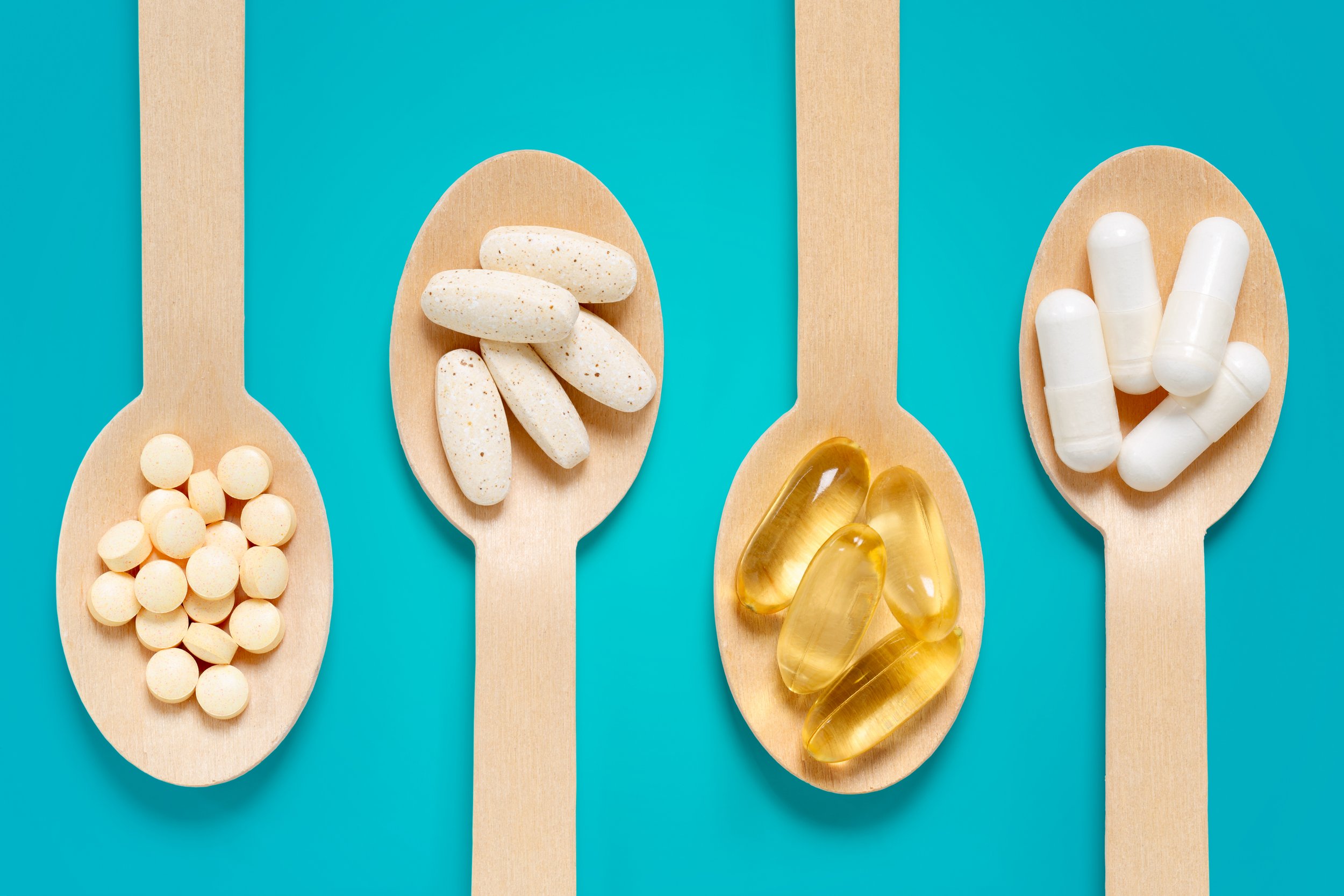V. is for Vitamins
Taking your vitamins is as easy as ABC(DE). Yup, these V (five) vitamins (in alphabetical order) are an excellent source for women’s health, throughout every stage of her/your life. And, here is Y:
A. is for Vitamin A + Antioxidant, and it gets an A+ for all the good stuff it does. Vitamin A supports eye health + vision, immune function, cell growth, reproduction and fetal development. All things that are very important to and for women. Did we mention that it is also good for your hair and skin? Who doesn’t want thick, shiny hair and soft glowing skin? It also plays a crucial role in boosting and/or enhancing your immune system, which in these [Covid-sensitive] times is super important. You can get a pretty darn good dose of Vitamin A by eating a healthy diet consisting of leafy green, orange and yellow vegetables, tomato products, fruits, dairy, eggs and fish oil.
B. is for Vitamin B and there are not 1, not 2, but a whopping THREE Vitamin B’s that are good for U. First, B6 enhances brain function and metabolism i.e. helps to keep you sharp and slim and you can find it in fish, chickpeas, avocados, bananas, beans, cereal, meats, oatmeal, and poultry. While B12 also boosts your metabolism, it helps your body make red blood cells which deliver oxygen to your body. Foods including cheese, eggs, fish, meat, milk, and yogurt are filled with B12 (and much more). And, the last B actually begins with the letter F, Folate or folic acid. It is yet another no “brainer” as it also helps to build a healthy brain. In particular, folate helps to prevent birth defects like spina bifida. So, if you are pregnant, studies suggest incorporating folic acid into your diet even before conception. Foods high in folate/folic acid include spinach and leafy greens, asparagus, citrus fruits, melons, strawberries, fortified grains, legumes, chickpeas, black beans, kidney beans, eggs, and [yuck] liver.
C. is for Vitamin C. You may also hear it called ascorbic acid. Vitamin C aids in healing wounds and helps your body make red blood cells. It also boosts levels of the brain chemical called norepinephrine, which makes you feel more alert and elevates your concentration. Researchers say that Vitamin C is one of the biggest immune system boosters of all, and fights free radicals which can damage cells, cause illness and aging. Vitamin C also helps your body absorb and store iron as well as decrease inflamation. You can get vitamin C from broccoli, grapefruit, kiwi, oranges, peppers, potatoes, strawberries, and tomatoes.
D. is for Vitamin D which is key to calcium absorption to help maintain and protect bone health and strength. Your body can naturally produce Vitamin D when your skin is exposed to sunlight (however it is best to wear sunscreen when exposed to sun). A daily dose of D can keep your immune system strong and your energy level up (which can enhance your mood too). You can get vitamin D in eggs and fish, especially salmon, mackerel, and sardines as well as fortified foods.
E. is for Vitamin E and it is bursting with benefits. While it is best known for its antioxidant properties and protecting cells from damage, Vitamin E is also important for the overall health of your eyes, blood, heart, brain and skin. In fact, Vitamin E can be applied directly to your body and is found in many over the counter cosmetic lotions, creams and serums. Here are V. (five) more specific Vitamin E benefits according to health experts and suggested evidence:
i. Protects eye cells from unstable molecules called free radicals ii. Helps to reduce heart disease risk by preventing clots from forming in the arteries iii. Helps reduce the risk of cognitive decline while slowing the signs of aging iv. Contributes to boosting your immune system v. Eases inflammation
You can get Vitamin E in foods including nuts, seeds, plant-based oils, peanut butter, avocado, spinach and wheat germ.
Food v. Supplements. As noted, you can easily include your ABC’s into your EAT’s by incorporating a variety of fruits, vegetables, whole grains, nuts, dairy and certain proteins into your daily diet. In fact, there is quite a lot of overlap; meaning many food products have multiple essential vitamins + minerals and visa versa. So, fine tune your slicing, dicing + chopping skills and include these power packed foods into your regular meal plan. However, if you are not keen on kale or nuts over nuts, there are plenty of vitamin ‘fortified’ foods that include one or more of the ABCDE vitamins. Food producers have been adding nutrients to foods for nearly 100 years and labels will call out and/or list the specific ingredient. Foods that are fortified commonly include milk, juice, bread and cereal products. They are an easy, convenient and affordable way to include vitamins and minerals into your diet. Lastly, vitamin supplements are readily available over the counter at supermarkets, drug, mass and health food stores so incorporating them into your daily routine is as easy throwing a few bottles in your check out cart. With so many options and varieties, you can get your vitamin fix via pills, powders, capsules, drops or gummies depending on how you want to ingest (swallow, sip or chew).
Consult with your personal provider/physician, pharmacist, or nutritionist if you have questions as they can guide your through your total vitamin journey.
Verbena does not provide medical advice, diagnosis, or treatment and is not a medical provider. Vitamins are an effective source for certain minerals and nutrients, however consult with your nutritionist or medical provider for specific questions regarding potential vitamin deficiencies and/or suggested allowances.
If you think you may have a medical emergency, call your doctor or 911 immediately.

